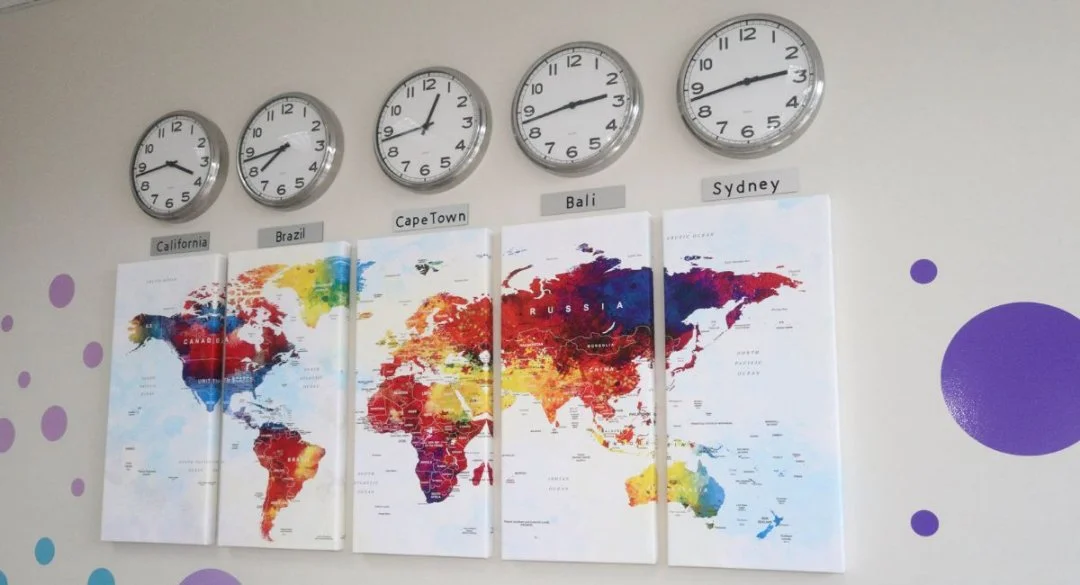In our increasingly interconnected world, the dynamics of teamwork have undergone a radical transformation. The rise of remote work, fueled by technological advancements and the shift in work cultures, has redefined the concept of a ‘global team.’ Instead of being confined within the walls of an office, your team can now span continents and time zones, each member contributing from their unique location. This shift towards a borderless work environment brings in a new era of widespread collaboration, enabling the pooling of diverse ideas and expertise.
However, this new model is not without its challenges. The most significant among these is managing time zone differences. It’s an issue that forms the core of the logistical challenges faced by global teams, requiring a thoughtful approach and intelligent navigation. Ensuring that team productivity and harmony are maintained, despite the geographical distances and time disparities, is a task that requires continuous effort. This challenge is not to be dismissed lightly, as it forms the bedrock of effective collaboration in a global team, irrespective of where you are or your team members find yourselves on the globe.
Understanding Time Zone Differences
Before we delve into strategies for managing these time zone differences, it’s important to grasp the fundamentals of what we’re dealing with. A time zone is a geographic region that adheres to a uniform standard time for legal, commercial, and social purposes. The world is divided into 24 time zones, each theoretically representing an hour. However, the actual number of standard time zones is over 35, accounting for half-hour and quarter-hour deviations.
Working across these different time zones can lead to a few hours of difference or even a full day’s discrepancy between team members. The implications of this can be far-reaching, leading to missed meetings, delayed responses, and the looming threat of burnout from trying to align with colleagues’ active hours. If not properly managed, this can breed frustration, decreased productivity, and strained team dynamics.
Scheduling Meetings
Scheduling meetings becomes an intricate dance when dealing with a global team. With team members scattered across various time zones, finding a time slot that suits everyone can feel akin to solving a complex jigsaw puzzle.
A creative solution to this conundrum is leveraging scheduling tools that take different time zones into account. Tools like Doodle, Calendly, and World Time Buddy eliminate the guesswork, helping you identify overlapping working hours that are convenient for everyone.
Another strategy worth exploring is rotating meeting times. While it may not be ideal, it does ensure that the inconvenience of attending meetings outside typical work hours is distributed fairly among team members. Such an approach not only demonstrates respect for everyone’s time but also promotes a sense of equity within the team.
Asynchronous Communication
Asynchronous communication can be a game-changer for global teams. This means that team members do not need to be online simultaneously to engage in meaningful communication. Traditional methods like email support or using modern platforms like Slack, Microsoft Teams, and Google Workspace can be beneficial.
Adopting asynchronous communication can significantly reduce the pressure of immediate responses, allowing team members to answer at a time that best suits their working hours. This approach fosters a culture of respect for personal time and acknowledges the reality of the team’s global composition.
Flexible Working Hours
Another innovative approach to managing time zone differences is adopting flexible working hours. In this model, employees have core working hours where they’re expected to be available. The remainder of the workday is flexible, allowing individuals to choose their hours based on their preferences and time zone.
This approach provides some overlap with other team members while also respecting personal productivity rhythms. It’s important to note, however, that this strategy demands trust and clear communication regarding expectations. It’s crucial to avoid fostering a culture of ‘always-on,’ which can lead to employee burnout.
Building a Global Mindset
Building a global mindset within your team is a less tangible but equally vital strategy. This involves cultivating an understanding and appreciation of the diversity inherent in a global team, including differing time zones.
Regular team-building exercises, cultural sensitivity training, and opportunities for sharing personal experiences can all contribute to building this global mindset. Encouraging empathy and understanding among team members can strengthen team dynamics. It can transform time zone differences from a challenge into a celebrated aspect of your team’s identity.
Use of Technology
In the face-off with time zone differences, technology stands as an invaluable ally. It’s no wonder that a survey by Alfresco reveals that 83% of workers depend on technology tools for effective collaboration. Technology’s role extends beyond mere communication and scheduling; it’s a bridge connecting team members across vast geographical and temporal distances.
Project management tools like Asana, Trello, and Basecamp have become crucial for global teams. These platforms offer a centralized location to track tasks, schedules, and progress across time zones, ensuring transparency and mitigating potential misunderstandings. With such technology at our disposal, the challenges posed by differing time zones can be effectively managed.
Wrap Up
Time zone differences can indeed pose a formidable challenge for global teams. However, with a combination of innovative strategies and the right tools, these challenges can be transformed into opportunities. By adopting flexible scheduling, asynchronous communication, and a global mindset, and leveraging technology, teams can not only manage time zone differences but thrive because of them.
Remember, the goal isn’t to eradicate these differences, but to adapt to them. After all, these differences are what make your team truly global. And in this era of unprecedented connectivity, that’s something to celebrate.







Leave a Reply